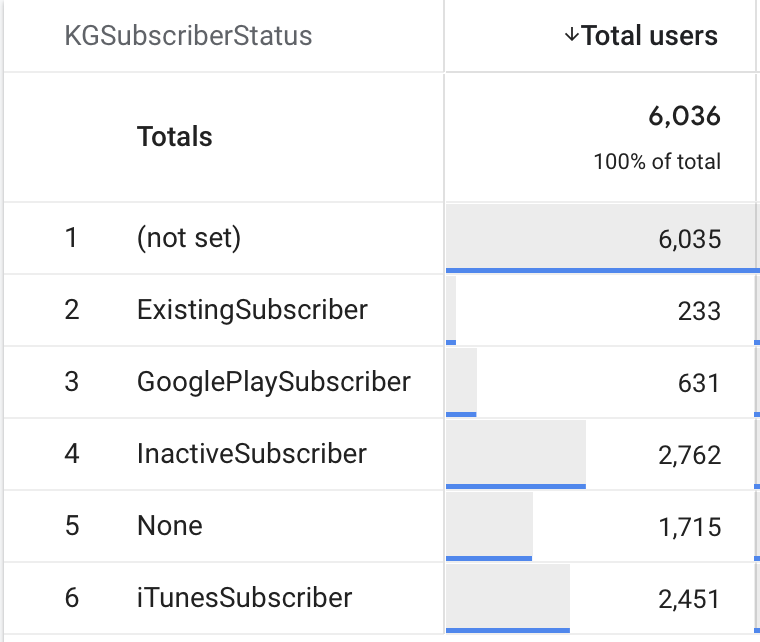Analytics Definitions & FAQs
Table of Contents
A full list of Pugpig Events and Custom Dimensions and their definitions can be found in the Pugpig analytics specification.
Below are a number of frequently asked questions including descriptions of the various Pugpig subscriber statuses.
FAQs
What are custom dimensions?
Custom dimensions are attributes associate with your data that has been customised by Pugpig. The list of all custom dimensions can be found in the Pugpig analytics specification.
You can read more on custom dimensions in Google's custom dimension doc.
What are scopes?
Scopes are the depth or level of your analytics. Scopes can be split into 3 types:
- Edition
- Page
- Global
A scope of Edition captures all interactions with Collections (Editions/Timelines).
- Example: cd6 represents whether the interacted edition is free, paid or sample
A scope of Page captures all interactions with a specific page.
- Example: event BoltCarouselTap fired when user taps on item within a carousel
A scope of Global are found globally. Interacting with anything will trigger analytics of this scope.
- Example: cd2 which represents the orientation of the app
What does (not set) mean?
(Not set) is seen when no value is sent for a dimension for a particular event. This often happens for a couple of key reasons:
- The dimension is not relevant for this event/metric
- The necessary info was not available to pass to the event
Why are (not set) higher in GA4 than UA for KGSubscriberStatus?
GA4 tracks events and dimensions in a different way to Universal Analytics (old GA), in that all parameters are expected for all events. If a parameter has no value for a given event, it is tracked as (not set) for that event.
What this means in practice when it comes to KGSubscriberStatus is that there will appear to be a large number of users who don't have a status. In fact, every user does have an accurate status, but may additionally have sent (not set) for certain events. You can thus safely ignore and filter out any (not set) values.
This is the kind of thing that's been changing a fair amount as GA4 matures, and it's very possible a future change will remove or reduce the number of instances like this.
Why do different subscriber states not add up to 'total users' ?
The reason is that a user can move between different states.
How do I track downloads of my app*?
To track app downloads you can use:
- the 'first_open' event in firebase
- 'New Users' in Analytics
To see raw download numbers though it is best to go to Apple Connect or Google Play directly, which is recommended by Google in this document.
Below is a screenshot of a report in GA4.

Pugpig Subscriber Status
Below is a list of different subscriber states as well as common questions. While some are self explanatory, others aren't but all will be added for consistency.
| Subscriber States | Descriptions |
| None | User active on the app but not subscribed (just looking through free content). Also includes lapsed app store subscribers. |
| ExistingSubscriber | A direct subscriber that is signed in and subscribed. |
| iTunesSinglePurchase | User that made a single purchase through iTunes |
| AmazonSinglePurchase | User that made a single purchase through Amazon |
| GooglePlaySinglePurchase | User that made a single purchase through Google |
| iTunesSubscriber, | A subscriber through iTunes |
| AmazonSubscriber | A subscriber through Amazon |
| GooglePlaySubscriber | A subscriber through Google Play |
| InactiveSubscriber | A lapsed direct subscriber or direct free trialist who did not convert to a paid subscription. Does not include lapsed app store subscribers. |
GA metrics definitions
| Metric Name | Definition |
| Total Users | Users that have logged an event regardless of whether or not the app was in use at the time. These are events that could be tracked in the background for example "notification_received" |
| Active Users | Users that are using the app when the event is logged. |


